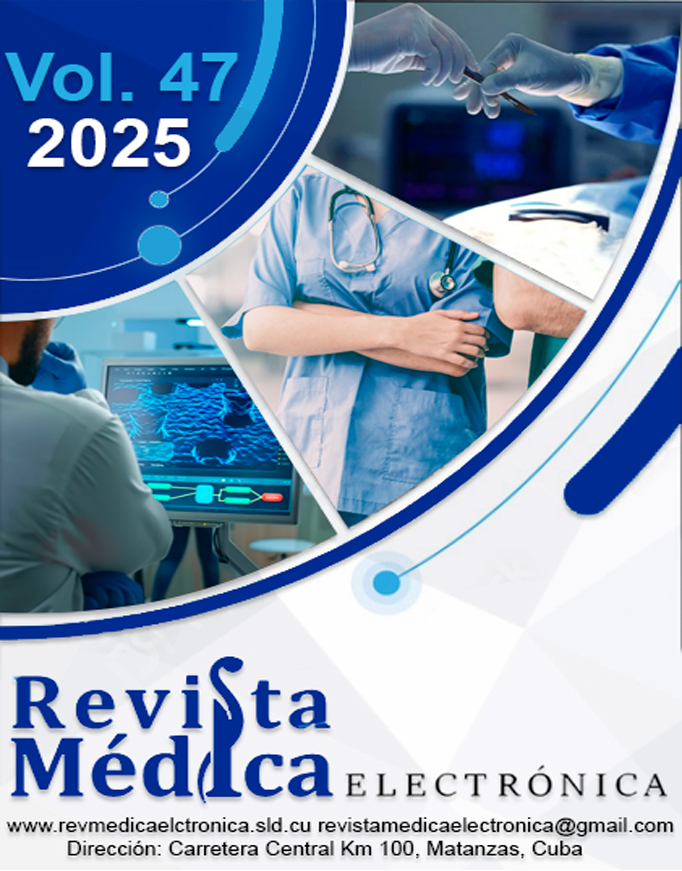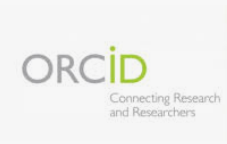Educational Strategy with Augmentative and Alternative Communication Systems for children with mild/moderate intellectual disabilities
Keywords:
alternative systems, augmentative systems, communicative skills, intellectual disabilityAbstract
Introduction: An educational strategy with Augmentative and Alternative Systems of Communication refers to a set of approaches and methods designed to support children with language and communication difficulties; assessing its scope is useful for successful decision-making.
Objective: To improve the communication skills and social participation of children with mild to moderate intellectual disabilities through the use of Augmentative and Alternative Communication Systems in educational and everyday surroundings.
Methods: Descriptive/explanatory correlational research, where 30 children with mild to moderate intellectual disabilities were intervened through an educative strategy with augmentative and alternative-communication systems applied in four phases of intervention.
Results: Improvements were achieved in expressive skills (45% to 70%; +25%), receptive skills (50% to 75%; +25%), social interactions (40% to 65%; +25%), use of compensatory strategies (60% to 80%; +20%), and communication in everyday contexts (55% to 79%; +24%). In all cases, significant differences were found in favor of the post-test (p<0.001).
Conclusions: The results of this study show that Augmentative and Alternative Communication Systems are an effective tool for improving communication skills and social participation of children with mild/moderate intellectual disabilities. Likewise, the intervention with these alternative systems improves key areas, such as expressive and receptive skills, social interactions, the use of compensatory strategies, and communication in everyday contexts. These advancements not only facilitate the integration of children into their educational and social environments, but also promote their overall well-being and quality of life.
Downloads
References
1. Guamán Guevara DE, Jerez Chango YA, Ortiz Morales B, Vet al. Impacto de la discapacidad auditiva en el desarrollo infantil. Ciencia & Turismo. 2024;3(4):70-85. DOI: 10.33262/ct.v3i4.54.
2. Pérez Vera L, Sánchez Herrera S, Rabazo Méndez MJ, et al. Inclusión educativa de los estudiantes con discapacidad: un análisis de la percepción del profesorado. Retos. 2024;51:1183-93. DOI: 10.47197/retos.v51.100463.
3. Pauta Ipiales JM, Casco Guamán PD. Los sistemas aumentativos y alternativos de comunicación para estimular la interacción en niños autistas dentro del aula de clases. Rev Cient UISRAEL. 2023;10(3):171-87. DOI: 10.35290/rcui.v10n3.2023.825.
4. Park H. Parents’ experiences and acceptance factors of AAC intervention for children with complex communication needs. Commun Sci Disord. 2020;25(2):318-33. DOI: 10.12963/csd.20729.
5. Pano C, Guillén DM, Escobar EY, et al. Educación inclusiva: experiencia desde un enfoque multidisciplinario. México: CAEIF; 2021.
6. Cañarte Cañarte MI, Molineros Ronquillo JR, Hidalgo Tumbaco VV, et al. Adaptaciones metodológicas de enseñanza-aprendizaje para el desarrollo del lenguaje y la comunicación en niños autistas. Polo del Conoc [Internet]. 2025 [citado 19/01/2025];10(2):134-54. Disponible en: https://polodelconocimiento.com/ojs/index.php/es/article/view/8863
7. Balta Sevillano GdC, Vilcapoma VB, Condor Campos B, et al. Inclusividad en la educación superior: Estrategias para una atención integral y equitativa. Aula Virtual. 2024;5(12):1163-89. DOI: 10.5281/zenodo.13844814.
8. Rangel-Rodríguez GA, Badia M, Blanch S. Encouraging emotional conversations in children with complex communication needs: An observational case study. Front psychol. 2021;12:674755. DOI: 10.3389/FPSYG.2021.674755.
9. Peñafiel Villarreal RE, Mejía Atiencia MI, Salazar Murillo OB, et al. Estimulación de habilidades comunicativas en niños de Educación Inicial. Rev Peru Educ. 2023;5(9):37-52. DOI: 10.33996/repe.v5i9.1190.
10. Game Mendoza KM, Vinueza Burgo GdC, Icaza Rivera DP, et al. Efectos de las estrategias colaborativas en el proceso académico de enseñanza-aprendizaje de voleibolistas prejuveniles. Retos. 2024;61:1172-83. DOI: 10.47197/RETOS.V61.109363.
11. Calero-Morales S, Vinueza-Burgos GC, Yance-Carvajal CL, et al. Gross motor development in preschoolers through conductivist and contructivist physical-recreational activities: Comparative research. Sports. 2023;11(3):61. DOI: 10.3390/sports11030061.
12. Rodríguez Torres AF, Naranjo Munive JE, Merino Alberca WV, et al. Adaptaciones curriculares en la enseñanza para alumnos con problemas respiratorios. Rev cuba med gen integr [Internet]. 2017 [citado 19/01/2025];33(4). Disponible en: https://revmgi.sld.cu/index.php/mgi/article/view/717
13. Syriopoulou-Delli CK, Eleni G. Effectiveness of different types of Augmentative and Alternative Communication (AAC) in improving communication skills and in enhancing the vocabulary of children with ASD: A review. Rev J Autism Dev Disord. 2022;9(4):493-506. DOI: 10.1007/S40489-021-00269-4.
14. Gadea-Uribarri H, Lago-Fuentes C, Bores-Arce A, et al. External Load Evaluation in Elite Futsal: Influence of Match Results and Game Location with IMU Technology. J Funct Morphol Kinesiol. 2024;9(3):140. DOI: 10.3390/JFMK9030140.
15. Sagarra-Romero L, Monroy Antón A, Calero Morales S, et al. ithlete Heart Rate Variability app: knowing when to train. Br J Sports Med. 2017;51(18):1373-4. DOI: 10.1136/bjsports-2016-097303.
16. Andzik NR, Schaefer JM, Christensen VL. The effects of teacher-delivered behavior skills training on paraeducators' use of a communication intervention for a student with autism who uses AAC. Augment Altern Commun. 2021;37(1):1-13. DOI: 10.1080/07434618.2021.1881823.
17. Rodríguez Torres AF, Páez Granja RE, Altamirano Vaca EJ, et al. Nuevas perspectivas educativas orientadas a la promoción de la salud. Educ Méd Super [Internet]. 2017 [citado 19/01/2025];31(4). Disponible en: https://ems.sld.cu/index.php/ems/article/view/1366
18. Calero Morales S, Garzón Duque BA, Cevallos Enrique C. La corrección-compensación en niños sordociegos con alteraciones motrices a través de actividades físicas adaptadas. Rev Cubana Salud Pública [Internet]. 2019 [citado 19/01/2025];45(4). Disponible en: http://scielo.sld.cu/scielo.php?script=sci_arttext&pid=S0864-34662019000400004
19. Calero Morales S, Fernández Lorenzo A, Castillo de la Rosa FC. Recreation activities to improve social behavior. Study in children and adolescents aged 9-14. Rev Cubana Med Gen Integr [Internet]. 2016 [citado 19/01/2025];32(3). Disponible en: http://revmgi.sld.cu/index.php/mgi/article/view/269/98
20. Calero Morales S, Pastaz Pillajo DP, Cabezas Flores M, et al. Influence of physical activity on the social and emotional behavior of children aged 2-5 years. Rev Cubana Med Gen Integr [Internet]. 2016 [citado 19/01/2025];32(3). Disponible en: http://revmgi.sld.cu/index.php/mgi/article/view/268/97
21. Bernal Cerza R, Rodríguez Fleitas X. Políticas educativas inclusivas para el aprendizaje y la participación de los estudiantes. Rev Metrop Cienc Apl. 2021;4(2):252-9. DOI: 10.62452/7s3sqt15.
22. Norrie CS, Waller A, Hannah EF. Establishing context: AAC device adoption and support in a special-education setting. ACM Trans Comput-Hum Interact. 2021;28(2):1-30. DOI: 10.1145/3446205.
23. Babb S, McNaughton D, Light J, et al. Using AAC video visual scene displays to increase participation and communication within a volunteer activity for adolescents with complex communication needs. Augment Altern Commun. 2020;36(1):31-42. DOI: 10.1080/07434618.2020.1737966.
24. Mesa-Trujillo D, Espinosa-Ferro Y, García-Mesa I. Reflexiones sobre bioética médica. Rev Méd Electrón [Internet]. 2022 [citado 19/01/2025];44(2):413-24. Disponible en: http://scielo.sld.cu/scielo.php?pid=S1684-18242022000200413&script=sci_arttext&tlng=en
25. Kleiman L. Functional Communication Profile. Illinois: Revised. LinguiSystems; 2003.
26. Asorey MJ, Fernández PF. Dificultades de aprendizaje y trastornos del desarrollo. Madrid: Ediciones Pirámide; 2014.
27. Judge S, Randall N, Goldbart J, et al. The language and communication attributes of graphic symbol communication aids–a systematic review and narrative synthesis. Disabil Rehabil Assist Technol. 2020;15(6):652-62. DOI: 10.1080/17483107.2019.1604828.
28. Bravou V, Oikonomidou D, Drigas A. Applications of virtual reality for autism inclusion. A review. Retos. 2022;45:779-85. DOI: 10.47197/retos.v45i0.92078.
29. Light J, Barwise A, Gardner AM, et al. Personalized early AAC intervention to build language and literacy skills: A case study of a 3-year-old with complex communication needs. Top Lang Disord. 2021;41(3):209-31. DOI: 10.1097/TLD.0000000000000254.
30. Aditya RS, Yusuf A, Rahmatika QT, et al. Unlocking wellness: the comprehensive impact of community-based exercise programs on older adults. Retos. 2024;60:1365-71. DOI: 10.47197/retos.v60.106846.
Downloads
Published
How to Cite
Issue
Section
License
Copyright (c) 2025 Germánico Renee Tovar-Arcos, Rita Maricela Plúas-Salazar, Dinora Alexandra Carpio-Vera, Raúl Ruperto Pánchez-Hernández

This work is licensed under a Creative Commons Attribution-NonCommercial 4.0 International License.
All content published in this journal is Open Access, distributed under the terms of the CC BY-NC 4.0 License.
It allows:
- Copy and redistribute published material in any medium or format.
- Adapt the content.
This will be done under the following terms:
- Attribute the authors' credits and indicate whether changes were made, in which case it must be in a reasonable way.
- Non-commercial use.
- Recognize the journal where it is published.
The copyrights of each article are maintained, without restrictions.






